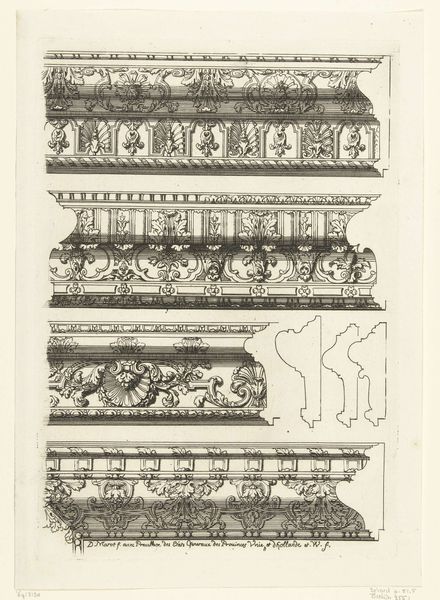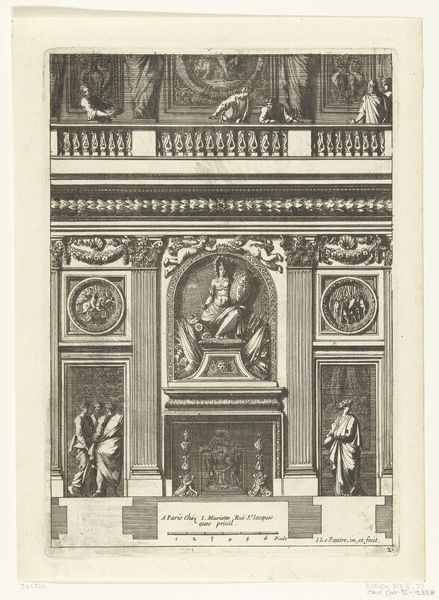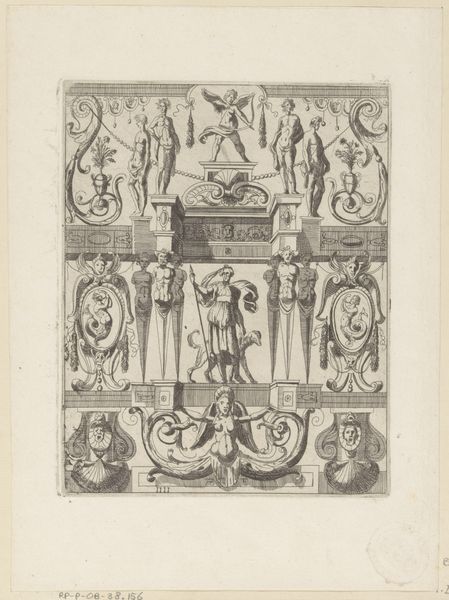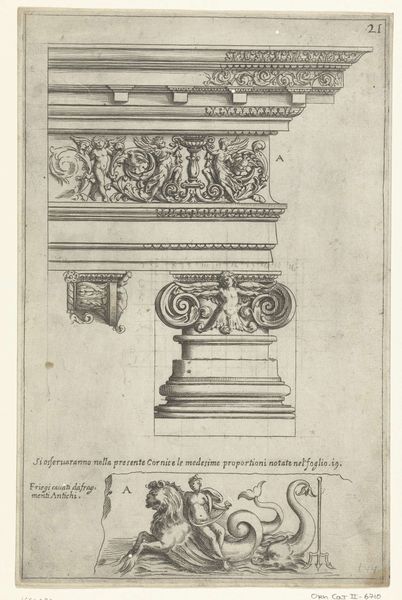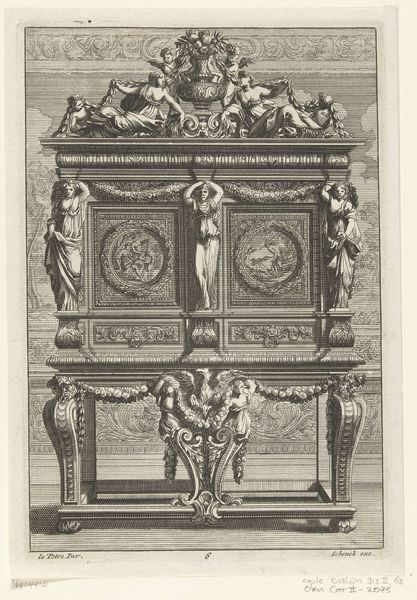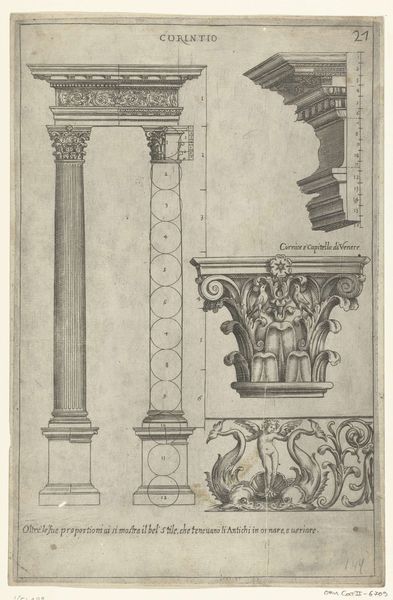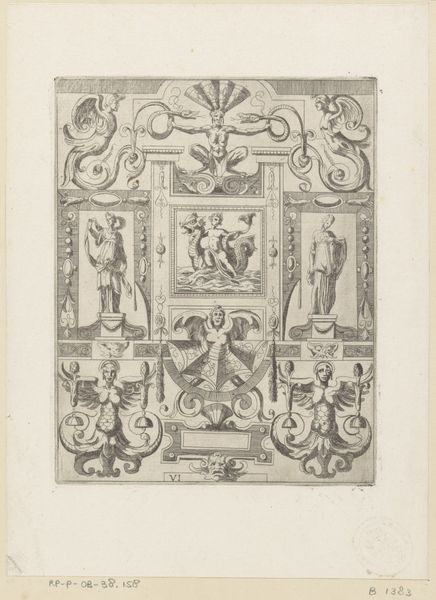
drawing, ornament, print, engraving, architecture
#
drawing
#
ornament
#
baroque
# print
#
pen illustration
#
line
#
engraving
#
architecture
Dimensions: height 276 mm, width 193 mm
Copyright: Rijks Museum: Open Domain
Editor: So, this is "Vier kroonlijsten" – Four Cornices – made in 1712 by Daniël Marot. It's an engraving, almost like an architectural blueprint, showcasing different cornice designs. I'm immediately struck by how detailed and intricate each design is. It's amazing to think someone was conceiving and etching these ideas. What captures your attention most when you look at this piece? Curator: You know, it’s funny, but my eye goes straight to the potential *weight* of these cornices. Can you imagine having one of these beauties perched above your head? This isn’t just decoration, is it? It's about power, about status, about creating a space that breathes opulence. Look closely at that second cornice - the coat of arms, the swags! It's almost shouting about the owner's pedigree. It's like a visual declaration: "I have arrived, and my house will *show* it." How do you react to that almost theatrical display? Editor: It’s fascinating how something seemingly functional can be so performative. I guess I hadn’t really considered it in that light. Are there particular elements that were common during the Baroque period? Curator: Absolutely. The deep relief, the emphasis on curves and movement. These cornices weren't about minimalist simplicity; they were about embracing excess. And Marot? He was a master of creating these aspirational designs that spoke to the burgeoning wealthy class. Think of it like Baroque Instagram; "envy-inducing" architectural details! Editor: I never thought about architectural designs as a form of aspiration and marketing, that is such a new view for me. Curator: Indeed! The dialogue of history, culture and design is endless. I will consider it next time I see architecture from this time.
Comments
No comments
Be the first to comment and join the conversation on the ultimate creative platform.
